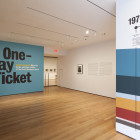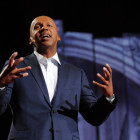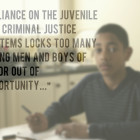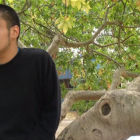
1940s Series of Paintings Sheds Light on New Era of Unrest
|
There is a fierce urgency to the work, something exhibit organizers said they saw firsthand in the tours they gave to city youths.
Juvenile Justice Information Exchange (https://jjie.org/series/youth-of-color-and-the-juvenile-justice-system/)
Minority youth are overrepresented at nearly every level of the juvenile justice system. Officials across the United States struggle to reduce what is often referred to as disproportionate minority contact, or DMC. Read all of the Juvenile Justice Information Exchange’s ongoing, in-depth coverage of DMC here, including the stories of the youth affected by it.

There is a fierce urgency to the work, something exhibit organizers said they saw firsthand in the tours they gave to city youths.

You’ve heard about the “school-to-prison pipeline.” Now, add to that the “cradle-to-prison pipeline,” the “poverty-to-prison pipeline” and the “prison-to-poverty pipeline.”

Eleven major foundations have pledged to spend a total of nearly $200 million for efforts to help boys and young men of color succeed, in concert with President Barack Obama’s “My Brother’s Keeper” initiative.

It is difficult to repair a broken relationship, one built on years of distrust. It is especially tough if you are the parent of a child forever getting caught up in the juvenile justice system, knowing their kid can be harassed and possibly injured or arrested for simply walking down the street.

Exhilaration jolted through my body when I stepped back onto the grounds of Central Juvenile Hall for the first time since my release. I finally knew what it felt like to come back as a free man and not as a detained juvenile. I cherished how different it felt.

How a young man of color became a victim of a society filled with injustice, gang violence and police cruelty.

Reading through JJIE’s extensive coverage regarding racial and ethnic disparities in juvenile justice over the past month, reviewing its excellent new DMC resource hub, and scanning the available literature, it is impossible to avoid a couple of painful conclusions.

Read all of the Juvenile Justice Information Exchange's ongoing, in-depth coverage of disproportionate minority contact here.

Alhough gay and transgender youth make up just 5 to 7 percent of the overall national population, LGBTQ youth represent up to 15 percent of the total juvenile justice population, according to a report by the Center for American Progress. And that may be a conservative estimate, experts say.

All children deserve to be treated fairly in the juvenile justice system. Unfortunately, all too often, that is not the case for minority youth.